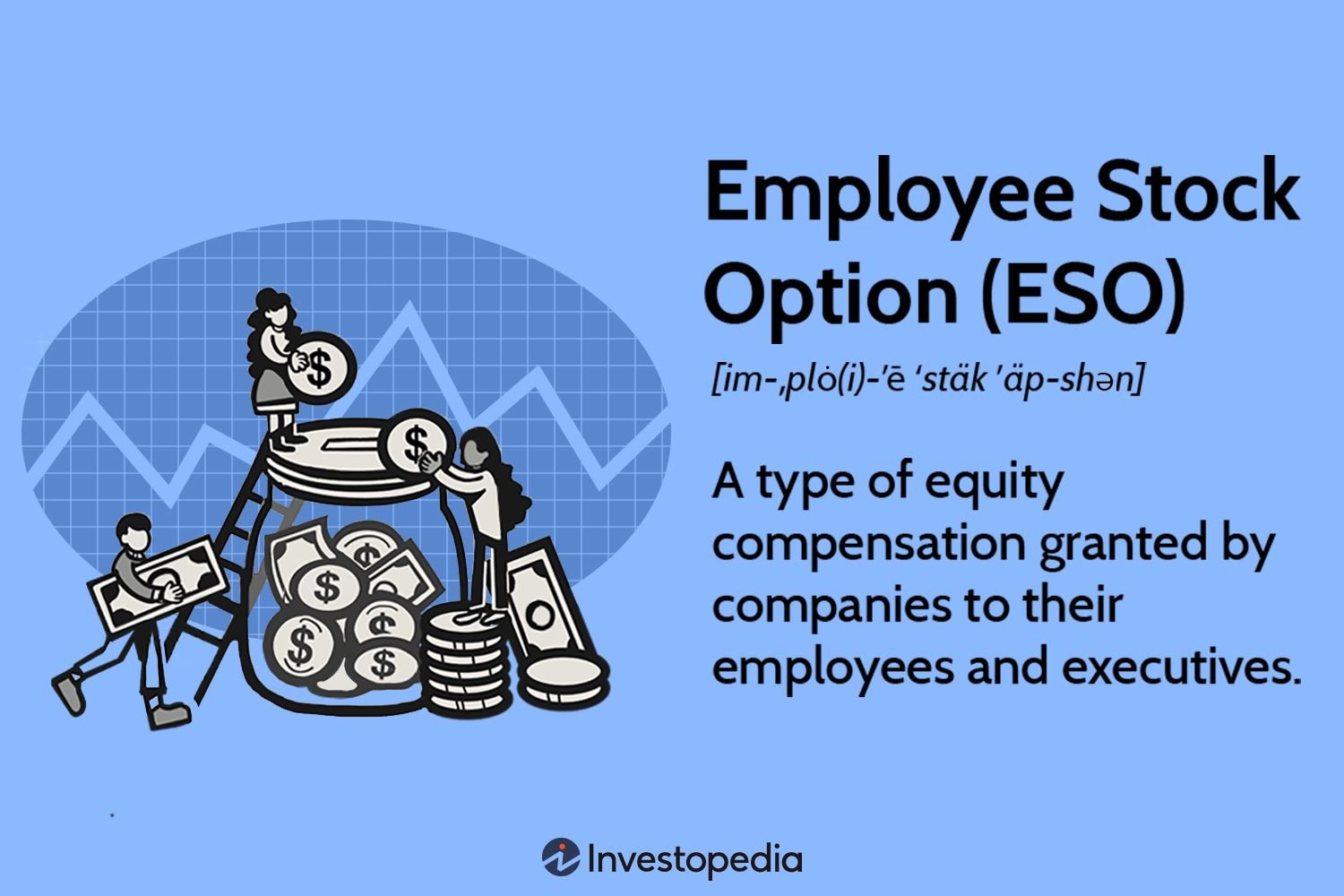Curious about understanding stock options for employees? Look no further! In this article, we will delve into the ins and outs of stock options, demystifying the concept for you. Whether you’re an employee looking to navigate this unique aspect of employee benefits or an employer seeking to comprehend the value of stock options for your workforce, we’ve got you covered. From the basics to advanced strategies, we’ll walk you through everything you need to know about understanding stock options for employees. So, let’s dive in and explore this fascinating topic together.
Understanding Stock Options for Employees
Companies often offer stock options to employees as a part of their compensation package. These options provide employees with the opportunity to purchase company stock at a predetermined price within a specified timeframe. Understanding stock options is essential for employees to fully take advantage of this benefit. In this article, we will dive into the details of stock options for employees, exploring how they work, the different types of stock options, tax implications, and strategies for maximizing their value.
How Do Stock Options Work?
Stock options give employees the right to buy a specific number of company shares, known as the “grant” or “exercise” price, at a future date. This future date is called the “vesting” period, during which the employee must wait before being able to exercise their options.
Let’s break down the basic components of stock options:
1. Grant Price: The price at which employees can buy the company’s stock. This price is typically lower than the market price at the time of grant.
2. Vesting Period: The duration an employee must wait before being able to exercise their stock options. Vesting periods can vary, but the most common structure is a four-year vesting schedule with a one-year cliff. This means that after the first year, the employee can exercise 25% of their options, and the remaining 75% vests monthly over the next three years.
3. Expiration Date: The last day an employee can exercise their options. If they fail to exercise them before this date, the options expire and become worthless.
4. Strike Price: The price at which the employee can buy the company’s stock when exercising their options. This price is based on the grant price and remains fixed over time.
During the vesting period, the employee has the choice to exercise their options or wait until a later date. Factors such as the company’s stock performance, market conditions, and personal financial goals can influence this decision.
Types of Stock Options
There are two main types of stock options commonly offered to employees:
1. Incentive Stock Options (ISOs): Incentive stock options are typically offered to key employees and provide tax advantages. When employees exercise ISOs, they are not required to pay taxes on the difference between the grant price and the market price at exercise. However, to receive these tax benefits, employees must hold the stock for at least two years from the grant date and one year from the exercise date.
2. Non-Qualified Stock Options (NSOs): Non-qualified stock options are more flexible for companies and are usually offered to a broader group of employees. When employees exercise NSOs, they are subject to ordinary income tax on the difference between the grant price and the market price at exercise. The company also withholds taxes on this amount.
It’s important for employees to understand which type of stock options they have been granted, as it affects the tax implications and potential benefits.
Tax Implications of Stock Options
Tax implications can significantly impact the overall value of stock options for employees. Here are some key considerations:
1. Exercise Date: When employees exercise their options, they trigger a taxable event. The taxable amount is the difference between the grant price and the fair market value at exercise. The type of stock options (ISOs or NSOs) determines whether employees encounter immediate or deferred tax obligations.
2. Holding Period: As mentioned earlier, ISOs have specific holding period requirements to qualify for favorable tax treatment. If the holding period is not met, the options are treated as NSOs, and the employee is subject to ordinary income tax on the difference between the grant price and the market price at exercise.
3. Alternative Minimum Tax (AMT): ISO exercises can trigger the AMT, which is an alternative method of calculating tax liability. This can result in employees having to pay taxes on the difference between the exercise price and the fair market value, even if they haven’t sold the stock.
4. Selling Stock: When employees decide to sell the stock they acquired through exercising options, they may be subject to capital gains tax. The tax rate depends on how long they held the stock before selling it. Selling the stock immediately after exercise may result in short-term capital gains tax rates, which are typically higher than long-term rates.
Understanding the tax implications of stock options is crucial for employees to appropriately plan their finances and make informed decisions.
Maximizing the Value of Stock Options
Employees can employ various strategies to maximize the value of their stock options. Here are some tips:
1. Stay Informed: Keep track of the company’s performance, market conditions, and industry trends. Staying informed allows employees to make informed decisions about exercising options.
2. Diversify Your Investments: It’s generally advised not to have too much of your overall wealth tied up in a single company. Consider diversifying your investment portfolio to minimize risk.
3. Understand the Vesting Schedule: Familiarize yourself with the vesting schedule of your options. This understanding will help you plan your financial goals and ensure you don’t miss any important deadlines.
4. Consult with Financial Advisors: Seek guidance from financial professionals who specialize in stock options and taxation. They can analyze your specific situation and provide personalized advice.
5. Consider Tax Planning: Engage in tax planning strategies to optimize tax efficiency. This may involve timing the exercise of options based on your anticipated tax bracket.
6. Evaluate the Company’s Prospects: Assess the company’s growth potential and future prospects. If you believe in the company’s long-term success, it may influence your decision on exercising options.
7. Budget for Taxes: Be prepared for the tax obligations that come with stock options. Budgeting for the potential tax liability ensures you don’t face any financial surprises.
By following these strategies, employees can make the most of their stock options and potentially enhance their financial situation.
Stock options for employees can be a valuable benefit that has the potential to significantly boost an individual’s wealth. However, understanding the intricacies of stock options is crucial for employees to make informed decisions and maximize their value. By comprehending how stock options work, the different types available, tax implications, and strategies for optimizing their value, employees can navigate this complex realm more effectively. Through careful planning and consideration, employees can leverage their stock options to achieve their financial goals and secure a brighter future.
What are Employee stock options (ESO)?
Frequently Asked Questions
Frequently Asked Questions (FAQs)
What are stock options for employees?
Stock options for employees are a type of compensation that gives employees the right to purchase company stock at a predetermined price within a specified time period.
How do stock options work?
Stock options typically have a vesting period and an exercise period. During the vesting period, employees earn the right to exercise their options. Once vested, employees can choose to exercise their options by purchasing the company’s stock at the predetermined price. They can then sell the stock at the current market price to make a profit.
What is the benefit of stock options for employees?
Stock options provide employees with the opportunity to own a stake in the company they work for. If the company’s stock price increases, employees can potentially make a significant profit when they exercise their options and sell the stock.
Are stock options taxable?
Yes, stock options are generally subject to taxation. The tax treatment depends on various factors, including the type of options (incentive stock options or non-qualified stock options) and when the employee exercises the options. It is advisable to consult a tax professional for guidance on the tax implications of stock options.
What is the difference between incentive stock options (ISOs) and non-qualified stock options (NSOs)?
Incentive stock options (ISOs) are typically granted to employees and may qualify for special tax treatment. Non-qualified stock options (NSOs), on the other hand, do not meet certain tax requirements and are subject to different tax rules.
Can employees lose money with stock options?
Yes, employees can potentially lose money with stock options. If the stock price declines below the predetermined price at which the options can be exercised, employees may choose not to exercise their options and instead let them expire worthless.
What happens to stock options if an employee leaves the company?
The treatment of stock options when an employee leaves the company depends on the terms of the stock option plan. In some cases, employees may have a limited time period to exercise their vested options after leaving the company. It is important to review the stock option agreement or consult with the company’s HR department for specific details.
Can stock options be transferred or sold?
In most cases, stock options cannot be transferred or sold to someone else. However, once the options are exercised and the stock is acquired, the employee can typically sell the stock on the open market if they choose to do so.
Note: The information provided above is general in nature and should not be considered as financial or legal advice. It is recommended to consult with a qualified professional for guidance specific to your situation.
Final Thoughts
Understanding stock options for employees is crucial in today’s corporate landscape. These financial instruments offer employees the opportunity to own a stake in the company they work for, providing potential financial benefits. By granting employees the right to purchase company stock at a predetermined price, stock options align the interests of employees and shareholders. They motivate employees to contribute to the company’s success and share in its growth. Moreover, stock options provide employees with the ability to participate in the company’s long-term success, making them an attractive incentive. Overall, understanding stock options for employees is essential for both employees and employers alike.



